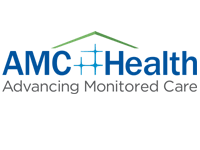Resource:
The Physicians’ Guide to the HITECH Act and EHR Solutions
Remote Patient Monitoring’s “Continuous Patient Knowledge” Essential to Improving Outcomes
U.S. physicians are dealing with a deluge of new and evolving mandates, standards, incentives and penalties designed to accelerate healthcare’s transition from a volume- to a value-based system. While we have already allocated significant resources to improve quality of care and reduce costs, we’re not yet generating the clinical and financial outcomes needed to create a sustainable healthcare system. What’s missing?
Perhaps the answer is a basic element that should be incorporated into the DNA of healthcare delivery: continuous patient knowledge. As a physician, your ability to deliver a better outcome is limited by what you know about the patient. If you see a patient once a year, you are evaluating data collected 360 days apart. You are forced to make educated guesses about what that patient’s health status looked like between visits.
If your patient is a healthy 30-year-old, this yearly update may be sufficient. But what about chronically ill patients or those who have just been discharged from the hospital? How much “patient knowledge” do you need to keep them healthy or deal with a medical issue on a timely basis? These questions are essential now that technology can provide the continuity of patient knowledge that each physician needs.
Enter remote patient monitoring, the key to establishing an effective healthcare model based on continuous patient knowledge. More than just a system for tracking key patient metrics, the right remote patient monitoring solution can deliver continuous visibility into a patient’s health status, translate data obtained on a continuous basis into useful patient knowledge through the use of automated clinical decision support tools, and use that deeper knowledge to make more informed decisions.
A comprehensive remote patient monitoring program collects, transmits and analyzes key biometric and behavioral data, generates alerts when an intervention is needed, and delivers meaningful information to a single page on the care team’s secure web portal. The patient’s care team can use this real-time data continuum to proactively connect the patient with the right intervention at the right time. The right intervention might be a clinician contacting a diabetic patient shortly after on out-of-range blood glucose reading is received. Discovering that this is the result of a dietary excursion allows the clinician to guide and motivate at this teachable moment. The right intervention might also be proactively connecting a patient to a physician or scheduling an ambulatory clinic appointment to prevent an adverse event or unnecessary hospitalization.
The effectiveness of evidence-based remote patient monitoring is no longer in question. A growing body of research published in peer-reviewed journals validates the benefits of continuous patient knowledge-based solutions on the chronically ill and patients transitioning from hospital to home. More continuous tracking of high-risk patients’ health status improves outcomes and encourages patient engagement. Consider this sampling of peer-reviewed studies involving solutions delivered by AMC Health:
- Population Health Management, December 2014: Geisinger Health Plan significantly reduced hospital readmissions and cost of care for patients with heart failure, and delivered a 3.3 ROI—for every $1 spent to implement this program, Geisinger saved $3.30. This translated to a reduction of cost equal to 11 percent per patient per month between 2008 and 2012.
- Journal of The American Medical Association, July 2013: When HealthPartners of Minnesota added telehealth and pharmacist management to their usual care for hypertension, 71.2 percent of the patients participating in the program had their blood pressure well-controlled after 12 months versus 52.8 percent of the control group.
- Journal of Managed Care Medicine, November 2012: New York City Health & Hospitals Corporation combined personalized case management and real-time patient management solutions to enable Medicaid patients with poorly controlled Type 2 diabetes to reduce HbA1c levels by a mean of 1.8 points.
- Medical Care, January 2012: Geisinger Health Plan reduced all-cause 30-day hospital readmissions for high-risk patients by 20 percent, by adding interactive voice response calls to its care management outreach.
Let’s look more closely at the fact that remote patient monitoring reduced readmissions by 20 percent. One fifth of the patients who would have been readmitted were not— because continuous patient knowledge enabled potential health issues to be addressed before they became serious or life threatening.
Continuing on the course of zero patient visibility between visits is risky. You can hope that your staff reaches the patient on a scheduled call just when the earliest signs of preventable deterioration or insidious decompensation become apparent. You can try to empower the patient and boost their disease literacy purely through hypotheticals, instructing the patient on what could happen if they don’t do such and such, rather than what is happening to them now. With real-time telemonitoring tools, patients can make immediate associations between their behavior and symptom and biometric expression.
Remote patient monitoring delivers knowledge so that physicians are not limited by insufficient visibility into how their patients are living out their chronic illness when not in the hospital or at the clinic. The right patient monitoring solution can provide you with the level of patient knowledge you need to improve outcomes and reduce unnecessary costs.
Clinically and financially, continuous patient knowledge-based solutions represent the future of healthcare. And we have the tools and the capability to get started now.
